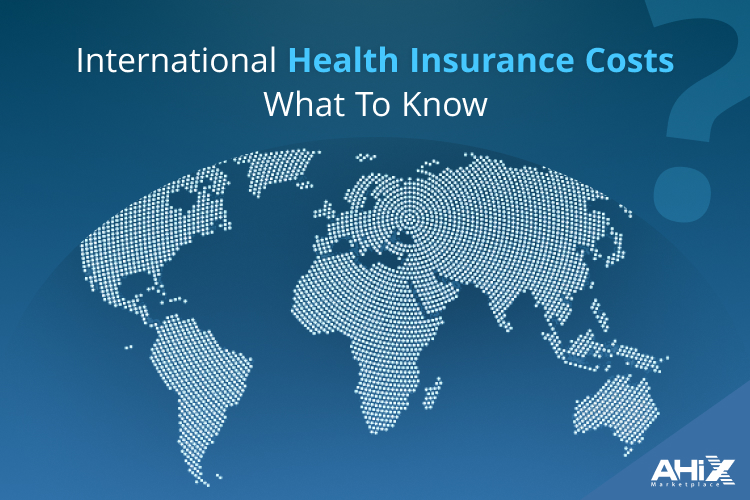Wondering about private health insurance cost? This article covers essential factors influencing premiums, deductibles, and out-of-pocket expenses. We’ll also provide tips on how to compare plans to find the best fit for your needs and budget. Read on to navigate these costs effectively.
Key Takeaways
- Private health insurance costs vary significantly based on age, location, tobacco use, and family size, necessitating a thorough assessment of individual health needs and financial circumstances.
- The Health Insurance Marketplace offers tools for comparing plans based on price and essential health benefits, enabling individuals to make informed choices while considering available financial assistance options.
- Selecting the right health plan involves balancing monthly premiums with out-of-pocket expenses and may benefit from consulting experts to identify the best options tailored to personal budgets and healthcare requirements.
Understanding Private Health Insurance
What is Private Health Insurance?
Private health insurance is a type of health insurance managed by private insurance companies rather than the government. It provides financial protection against medical expenses and can be purchased by individuals, families, or employers. Private health insurance plans are customizable to meet the specific needs of the policyholder, offering a range of benefits such as coverage for doctor visits, hospital stays, and prescription medications. Understanding what private health insurance entails helps in making informed decisions about your healthcare coverage.
Understanding Private Health Insurance Cost
Understanding private health insurance costs is crucial for informed healthcare decisions. These costs can vary widely due to factors like age, location, tobacco use, and family size. Many families grapple with healthcare expenses, impacting their insurance choices. Selecting the right plan involves thoroughly assessing health needs and financial status.
Health insurance helps manage unexpected medical costs and provides financial security. Selecting the right plan involves assessing personal healthcare needs and anticipated yearly expenses. This insight aids in navigating the complexities of health insurance, ensuring choices that fit your family’s needs and budget.
Understanding Medicaid services and their role in healthcare coverage strategies is also essential. Medicaid services offer in-network preventive services and can significantly impact the financial implications of receiving care through different types of plans.
Next, we will break down the main factors affecting premiums, the role of deductibles and out-of-pocket costs, and the different categories of health insurance plans available.
Factors Affecting Premiums
Several key factors significantly influence health insurance premiums. Age is a major element, with older individuals often facing premiums three times higher than younger applicants. Location matters due to variations in competition, regulations, and living costs. Tobacco usage also impacts premiums, with smokers facing rates up to 50% higher than non-smokers.
Family size also plays a significant role in health insurance costs. Larger families usually face higher premiums because more individuals need coverage. This can be particularly challenging for families with multiple dependents, as the cost for each additional member can accumulate rapidly.
Knowing these factors aids in making more informed health insurance choices.
Deductibles and Out-of-Pocket Costs
Deductibles are the out-of-pocket amounts a policyholder must pay before insurance coverage kicks in, varying significantly by plan. Additionally, policyholders often face copayments, fixed fees for specific services or prescriptions.
Coinsurance represents the percentage of costs shared with the insurance company after meeting the deductible. Out-of-pocket maximums cap the total expenses on covered services in a policy year, acting as a safety net against exorbitant medical costs.
Grasping these terms helps in managing your budget and avoiding unexpected financial burdens.
Plan Categories and Coverage Levels
Health insurance plans fall into four main categories: Bronze, Silver, Gold, and Platinum. Each offers varying premiums and out-of-pocket costs. Bronze plans feature the lowest monthly premiums but higher out-of-pocket expenses, suitable for individuals who use their insurance infrequently and prefer low monthly costs.
Platinum plans, on the other hand, have the highest premiums but the lowest out-of-pocket costs, ideal for those needing extensive medical care. Silver and Gold plans offer a balance between monthly premiums and out-of-pocket expenses.
Selecting the right plan category involves balancing premiums with out-of-pocket costs. This decision significantly impacts overall healthcare affordability and should be based on health needs and financial situation.
Types of Health Insurance Plans
There are several types of private health insurance plans available, each with its unique features:
- Indemnity Plans: These plans pay a fixed amount for each medical service, regardless of the actual cost. They offer flexibility in choosing healthcare providers but may come with higher out-of-pocket expenses.
- Managed Care Plans: These plans require policyholders to receive care from a network of participating providers. They often offer lower premiums in exchange for limited provider choice, making them a cost-effective option for many.
- Preferred Provider Organization (PPO) Plans: PPO plans provide a network of participating providers but also allow policyholders to receive care from out-of-network providers for an additional fee. This flexibility makes PPO plans a popular choice for those who want more control over their healthcare options.
- Health Maintenance Organization (HMO) Plans: HMO plans require policyholders to receive care from a network of participating providers. They typically offer lower premiums and out-of-pocket costs in exchange for limited provider choice, making them suitable for those who prefer a more structured healthcare plan.
Understanding the different types of health insurance plans helps in selecting the one that best fits your healthcare needs and budget.
Comparing Costs on the Health Insurance Marketplace
The Health Insurance Marketplace helps individuals and families compare and choose health insurance plans. It allows users to view various plans side by side, making comparison easier. This ensures informed decisions about healthcare coverage.
The marketplace’s comparison features include evaluating plans based on price, coverage, and other relevant factors. Leveraging these tools helps find a plan that fits both healthcare needs and budget.
Next, we will explore the specific tools for comparison, evaluating essential health benefits, and financial assistance options available on the marketplace.
Using Comparison Tools
The Health Insurance Marketplace provides tools to help consumers compare health plans based on price, coverage, and provider networks. Online tools enable side-by-side evaluation of different plans, simplifying cost and benefit analysis.
Users can input their health needs and preferences to find suitable private health plans. Consumers can filter plans based on criteria like monthly premiums, deductibles, and covered services, reducing expenses by identifying the best options.
Evaluating Essential Health Benefits
Under the Affordable Care Act, health insurance plans must cover essential health benefits, including emergency care, maternity care, health coverage, and preventive services. Consumers should verify these benefits when comparing plans, as they determine the minimum services covered.
Routine screenings and preventive care often have no copay, catching potential issues early and reducing the need for expensive treatments later. Evaluating these benefits ensures the chosen plan provides comprehensive coverage that meets health needs.
When comparing plans, assess their coverage of essential benefits like preventive services, hospitalization, and prescription drugs. This ensures an informed decision about the best value for healthcare needs.
Financial Assistance Options
Many individuals qualify for financial assistance like premium tax credits and cost-sharing reductions, making health insurance more affordable. These aid options lower monthly premiums and decrease out-of-pocket expenses during healthcare use.
These programs help lower health insurance costs for eligible individuals and families. Taking advantage of these options can significantly reduce expenses and make coverage more accessible.
Tips for Reducing Private Health Insurance Costs
Lowering health insurance costs is a priority for many. Here are some strategies to consider:
1. Use generic medications to reduce prescription costs without sacrificing effectiveness.
2. Plan ahead for urgent care to avoid costly ER visits.
3. Opt for outpatient facilities, which are generally cheaper than hospitals.
By implementing these strategies, you can help manage and lower your health insurance expenses.
Using in-network providers cuts medical expenses due to lower rates. Maintaining a healthy lifestyle reduces the likelihood of expensive health issues. Selecting the right health plan requires considering both premiums and expected healthcare needs.
Next, we explore tips like selecting high-deductible plans, using preventive services, and considering employer-sponsored plans.
Choosing High-Deductible Plans
High-deductible health plans lower premium costs, making them attractive for reducing monthly expenses. These plans often include health savings accounts (HSAs) for saving pre-tax money for medical expenses.
However, high-deductible plans can lead to high out-of-pocket costs during unexpected medical events. Assess your overall health needs and financial situation to ensure alignment before selecting such a plan.
Taking Advantage of Preventive Services
Preventive services detect and prevent health issues before they escalate, promoting overall wellness and reducing serious medical conditions. Common services include vaccinations, screenings, and annual check-ups. Engaging in preventive care can save money long-term by avoiding expensive treatments.
Exploring Employer-Sponsored Plans
Employer-sponsored health insurance typically offers lower premiums than private insurance, as employers cover a portion of the costs. These plans usually provide comprehensive coverage, reducing the need for additional private policies and out-of-pocket expenses. A health insurance company or a life insurance company may also provide similar benefits.
Employees should thoroughly review their employer’s health plans to identify the best coverage for their specific needs. Exploring these options can lead to significant cost savings and improved coverage.
Additional Considerations for Families
When selecting a health insurance plan, consider family size as it significantly influences premium costs and coverage options. Larger families may face higher premiums due to increased needs, making it essential to evaluate coverage options based on size. Children’s health insurance can be obtained through a parent’s employer, individual plans, or government programs like Medicaid and CHIP.
Understanding unique needs and options for family coverage is crucial for effective budgeting and cost management. Next, we delve into family size and needs, child and dependent coverage, and the importance of mental health and wellness programs.
Family Size and Needs
Family composition and health requirements directly affect premiums and overall health insurance costs. For example, a family with young children has different needs compared to one with teenagers or elderly parents. Consider these needs when selecting a plan to ensure adequate coverage for all family members.
Family health insurance plans offer varying coverage levels based on family size and family plans. Larger families may need more comprehensive coverage, increasing premiums. Evaluating each member’s health needs and anticipated expenses helps in choosing a plan that balances cost and coverage effectively.
Child and Dependent Coverage
Family floater plans cover multiple children under one policy, making them convenient for families with several dependents. However, older children may need separate policies as they age out of dependent coverage. This is crucial for families with older children transitioning to individual plans.
Evaluating your children’s specific needs, such as pediatric care and vaccinations, helps in selecting a suitable family health plan. Ensuring coverage for essential benefits like routine check-ups and preventive care is crucial for their long-term health and well-being.
Mental Health and Wellness Programs
Many health plans offer mental health and wellness programs, providing essential support for families at varying costs. These programs are vital for promoting family well-being and addressing mental health needs, increasingly recognized as crucial components of overall health.
Including mental health and wellness programs in health plans may influence overall insurance costs for families. Considering mental health support is significant for long-term family health.
Access to quality mental health services helps prevent severe health issues and contributes to a healthier, happier family environment.
Finding the Right Plan for Your Budget

Begin selecting a health insurance plan by evaluating personal financial circumstances to identify what fits within budget. This involves considering both immediate costs and long-term financial impacts. Thorough assessment helps find a plan that provides adequate coverage without straining your budget.
When evaluating health insurance options, it’s essential to analyze not just the premium costs but also deductibles, out-of-pocket expenses, and network coverage. Understanding these various cost components will give you a full picture of your potential healthcare expenses. This comprehensive evaluation helps in making an informed decision that aligns with your financial capabilities.
In the following subsections, we will discuss balancing premiums and out-of-pocket costs, assessing total annual costs, and the benefits of consulting with experts for personalized guidance.
Balancing Premiums and Out-of-Pocket Costs
Choosing a health insurance plan often involves a trade-off between lower monthly premiums and higher out-of-pocket expenses. Many individuals prefer lower monthly premiums, but this can lead to higher out-of-pocket costs when seeking care. Finding an optimal level of premiums requires considering not just monthly costs but also the likelihood and potential amount of out-of-pocket expenses.
A lower premium often corresponds with a higher deductible, affecting your overall cost strategy. Weighing these trade-offs can help you select a plan that balances your financial needs with your healthcare requirements. This careful consideration ensures that you are not overburdened by medical expenses while maintaining affordable monthly payments.
Assessing Total Annual Costs
Calculating total annual costs should encompass premiums, deductibles, and any additional out-of-pocket expenses incurred throughout the year. To determine the total annual healthcare expenditure, include premiums, deductibles, and any copayments or coinsurance. This comprehensive calculation helps in understanding the full financial impact of your health insurance plan.
Total annual health insurance costs should encompass all expenses, including premiums, deductibles, and other related costs. By considering these factors, you can better plan your budget and avoid unexpected expenses. This holistic view of costs ensures that you select a plan that aligns with your financial situation and healthcare needs.
Consulting with Experts
Consulting with insurance brokers or consultants can greatly enhance your ability to find the best private health insurance plan suited to your budget. These experts have access to a variety of plans and can help streamline the comparison process, saving you time and effort.
Brokers and consultants provide personalized assistance, helping you navigate the complexities of coverage options and costs. By seeking expert guidance, individuals and families can achieve significant cost savings and make informed choices about their health insurance.
Choosing the Right Health Insurance Provider
Selecting the right private health insurance provider is crucial for ensuring quality coverage and service. Here are some factors to consider:
- Network: Ensure the provider has a network of participating providers that includes your primary care physician and any specialists you may need to see. A broad network offers more options for receiving care.
- Coverage: Check if the provider offers coverage for the services and treatments you need. Comprehensive coverage ensures you are protected against various medical expenses.
- Cost: Evaluate the premiums, deductibles, and copays associated with the plan. Understanding the cost structure helps in budgeting for your healthcare expenses.
- Reputation: Research the provider’s reputation for customer service and claims processing. A reputable provider ensures a smoother experience when accessing healthcare services and filing claims.
By considering these factors, you can choose a private health insurance provider that meets your healthcare needs and financial situation.
Additional Benefits and Discounts
In addition to the standard benefits offered by private health insurance plans, many providers offer additional perks and discounts that can enhance your overall healthcare experience:
- Wellness Programs: Many providers offer wellness programs that provide discounts on gym memberships, fitness classes, and other health-related expenses. These programs encourage a healthy lifestyle and can lead to long-term health benefits.
- Vision and Dental Coverage: Some providers offer vision and dental coverage as an add-on to their standard health insurance plans. This additional coverage ensures comprehensive care for your eyes and teeth, which are essential aspects of overall health.
- Prescription Medication Discounts: Many providers offer discounts on prescription medications, either through their own pharmacy programs or through partnerships with external pharmacies. These discounts can significantly reduce your out-of-pocket costs for medications.
- Telemedicine Services: Some providers offer telemedicine services, allowing policyholders to receive medical care remotely through phone or video consultations. Telemedicine provides convenient access to healthcare, especially for minor ailments or follow-up visits.
By taking advantage of these additional benefits and discounts, you can enhance your healthcare coverage and potentially save on medical expenses.
Summary
Navigating the world of private health insurance requires a thorough understanding of various factors that influence costs and coverage options. By comprehending the impact of premiums, deductibles, out-of-pocket expenses, and plan categories, individuals and families can make informed decisions that best suit their needs and budgets.
Utilizing the Health Insurance Marketplace and its comparison tools, evaluating essential health benefits, and exploring financial assistance options can significantly aid in finding the right plan. Additionally, employing strategies to reduce health insurance costs and considering specific family needs ensures that you choose a comprehensive and affordable health plan.
Ultimately, finding the right health insurance plan involves balancing immediate costs with long-term financial impacts and seeking expert advice when necessary. By applying the tips and knowledge shared in this post, you can secure the best health coverage for you and your loved ones, ensuring both health and financial well-being.
Frequently Asked Questions
What factors influence health insurance premiums?
Health insurance premiums are primarily influenced by age, location, tobacco usage, and family size. Understanding these factors can help individuals better anticipate their insurance costs.
How do deductibles and out-of-pocket costs work?
Getting a reliable medical insurance policy is an important decision we understand. We can guide you to the best personal or family healthcare plan. Visit the company site for a list of coverage options. Enter the ZIP Code of the location.
What are essential health benefits?
Essential health benefits are the minimum required services that health plans must cover, including preventive care, emergency services, hospitalization, and prescription medications. These benefits ensure that individuals have access to necessary health care services.
Is financial assistance available for health insurance?
Yes, financial assistance for health insurance is available through premium tax credits and cost-sharing reductions for eligible individuals and families. This support can significantly reduce the cost of coverage.
How can I reduce my health insurance costs?
To effectively reduce your health insurance costs, consider selecting high-deductible plans, utilizing preventive services, and exploring employer-sponsored options. These strategies can significantly lower your overall expenses.



